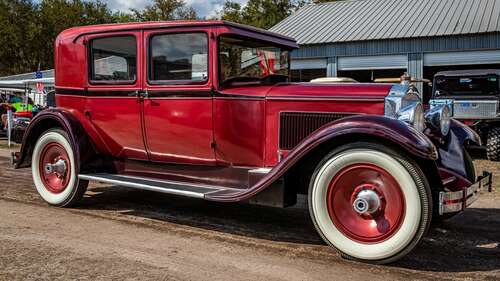
Mirroring many company origin stories, the Packard Motor Car Company arose as a result of James Ward Packard’s suggestions to the maker of a car he owned, which had required constant repairs, being ignored. Months later, he joined his brother, William Doud Packard, with other backers to found a new company to build a better automobile. The first car was completed by the end of 1899, and by 1900, serial production was underway.
The excellent build quality of early Packards impressed customers, quickly increasing demand and fueling rapid growth. An heir to a railroad fortune, Henry B. Joy, bought two cars after seeing them at the 1901 National Auto Show, and also bought shares in the company. By 1902, Packard was building its Model K with a 24-horsepower engine while demand increased — production reached 10 cars per day that year. At the same time, a stock offering was made to raise $250,000 for expansion. H.B. Joy led a group of investors from Detroit in buying $150,000 of stock, effectively taking control of the company.
Shortly after losing control of his own company, J.W. Packard tendered his resignation, while his brother went back to running their previous business. While H.B. Joy talked J.W. Packard into returning, his tenure would be short. H.B. Joy bought land in Detroit and built a sprawling modern automotive plant on 66 acres, moving Packard from Ohio. While J.W. Packard remained president, he returned to Warren, Ohio, having no more active role in the company.

